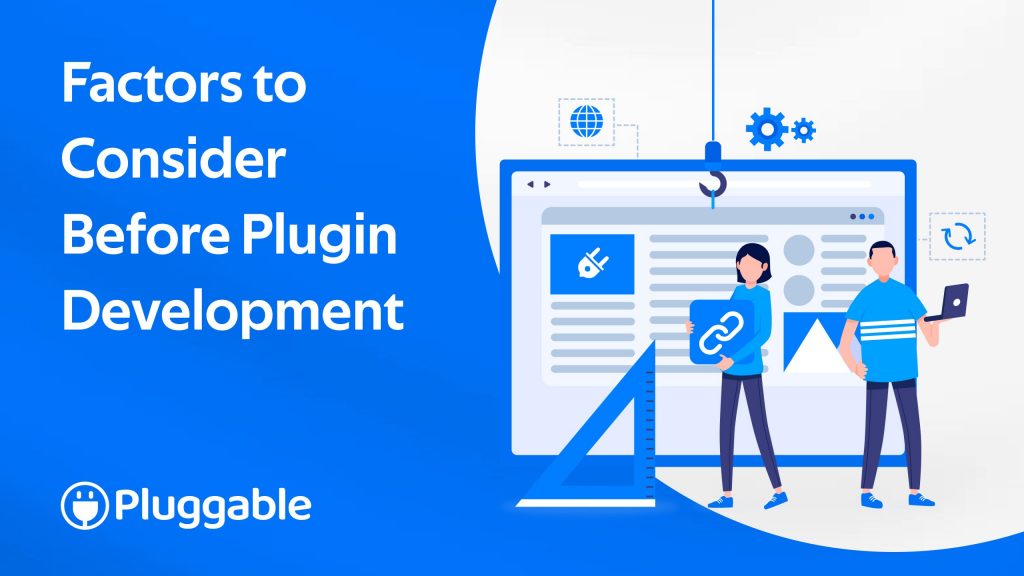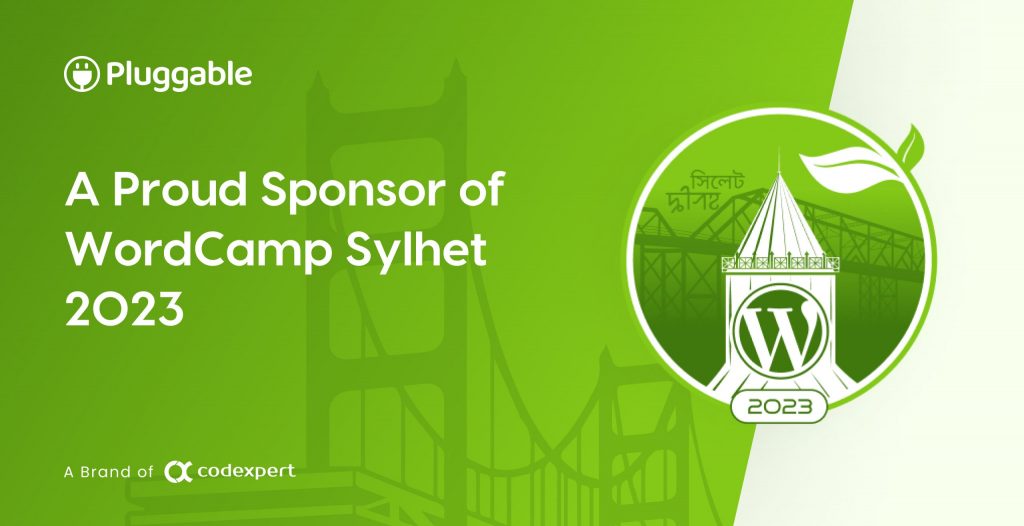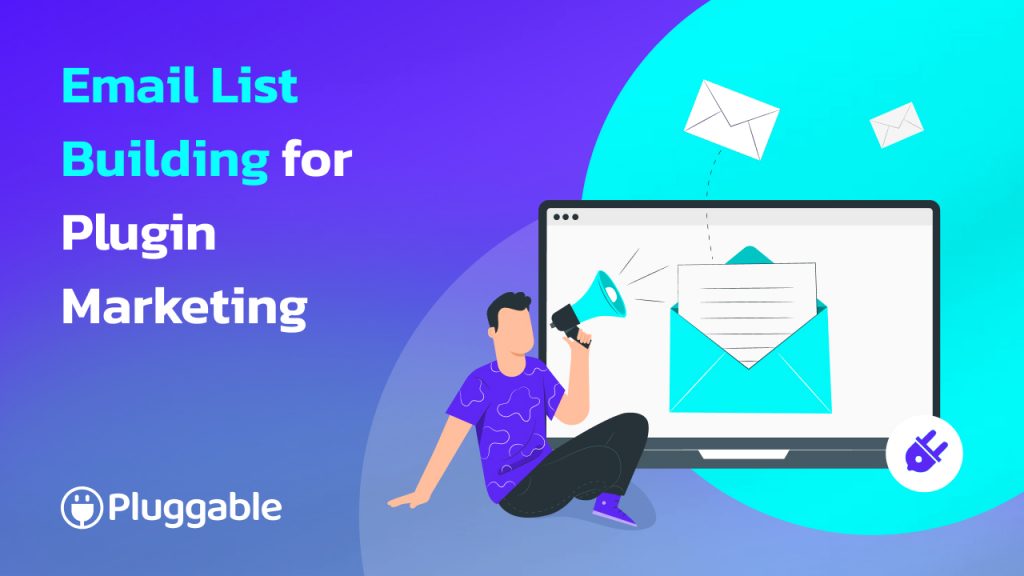There are more than 60,000 free plugins available on the WordPress site. If you’re itching to dive into the exciting world of plugin development, you have to stand out from the crowd. WordPress powers over 75 million websites, so your plugin has tremendous potential to make an impact. It is not difficult to build a plugin for WordPress if you have coding knowledge.
But before you embark on this coding adventure, it’s crucial to equip yourself with the knowledge of what truly makes a plugin unique. In this article, we’ll unveil the top 7 factors you must consider before developing your WordPress plugin.
Now, let’s delve into the essential factors that will pave the way for your plugin’s success.

Things to analyze before finalizing a WordPress plugin idea
When you are thinking about creating a WordPress plug-in, you should consider certain things. Nowadays, a little programming knowledge won’t help you because competition is fierce. Validating your plugin idea within the WordPress ecosystem is important before starting the work. Ask yourself these vital questions during the research and development (R&D) process:
- Does your plugin cater to a genuine need of WordPress users?
- How will your plugin be unique?
- Does the same type of plugin exist?
- What are the benefits of these features for users?
- What will be the captivating design for the front end?
- Will your plugin seamlessly integrate with necessary plugins and services?
Once you have answered the question, you can move on to the next step. There are so many other factors to consider as well. In the next part of the article, we will talk about that.
7 factors to consider before developing a WordPress plugin

- Identify a Gap in the Market
The first step in developing a WordPress plugin is identifying a market gap. Research existing plugins in the WordPress plugin repository and evaluate their features and functionalities.
You must look for areas where you can provide a unique solution or enhance existing plugins. By identifying a gap, you can develop a plugin that fulfills a specific need and stands out. Create a plugin that adds real value by understanding your target audience’s needs.
If you are building something that is already existed, make to find out what unique features you are going to add to your plugin. Besides, you have to take into account the price of the products. Decide which category you are working on. In that area, most plugins are either free or paid. If paid, then what is the price range? It will help you determine whether you will make a free or paid plugin.

- Define Clear Goals And Create a Road Map
Who can achieve success without proper planning? Defining clear goals and a well-defined scope for successful plugin development is crucial. In that case, you can outline the specific objectives you want to achieve with your plugin. Don’t forget to determine the features and functionalities it will offer. Prepare a suitable flowchart or ask other team members for help if you need it.
Setting clear goals and boundaries helps prevent feature creep, ensures focus, and enables you to deliver a polished and streamlined plugin. A clearly defined scope helps you manage expectations, allocate resources efficiently, and streamline development. Clearly define:
- How are you going to use the hooks?
- What will be the name of your plugin?
- Define features and functionalities.
- Will it be a customizable plugin?
- Will you utilise WP Cron?
- Will you keep the auto-update feature?
- Make a full programming chart

- Ensure Compatibility of your plugin
We all know that WordPress is a versatile platform with a vast ecosystem of themes, plugins, and configurations. A plugin’s compatibility is crucial to its success. You must conduct thorough testing to ensure your plugin works seamlessly with:
- Different versions of WordPress
- Popular themes
- Other plugins
Compatibility testing helps you identify and address conflicts or integration issues. Ensuring compatibility enhances the user experience and minimizes potential problems arising from incompatible plugins or themes.

- Focus on User Experience and Design
Do not forget to consider the user experience when designing your WordPress plugin. Having a user-friendly, well-designed interface is essential for engaging users and encouraging them to use your plugin. You can take help from a UX designer to make things easy for you.
Pay attention to factors including responsiveness, accessibility, and aesthetics. Ensure your plugin is easy to navigate and understand, with clear instructions and intuitive workflows. By prioritizing user experience and design, you enhance user satisfaction.

- Don’t forget about optimizing performance.
Website performance is critical in today’s fast-paced digital world. Your WordPress plugin should be optimized for speed and efficiency to ensure smooth functionality.
Implement caching mechanisms, optimize database queries, and follow coding best practices to minimize resource usage. A fast and responsive plugin improves the user experience and helps retain visitors to your website. By prioritizing performance optimization, you enhance the reputation of your plugin and increase its chances of being widely adopted. So before starting to build a WordPress plugin, make sure the plugin will not affect the speed of the website.

- Increase Community engagements
Connect with other WordPress developers and users by joining WordPress forums and online communities. Share your expertise, participate in discussions, and offer support. You can establish credibility for your plugin by participating in these forums.
As a WordPress plugin developer, engaging with the WordPress community enables you to gather feedback from other developers and users. Actively listen to their suggestions, bug reports, and feature requests. This feedback can provide valuable insights into the needs and expectations of your target audience, helping you improve your plugin and make it more user-friendly.
Besides, community engagement can open doors to collaboration opportunities. Partnerships with other developers who share similar interests or complementary skills can lead to joint projects. Collaborative projects can expand the reach of your plugin and enhance its functionality.
Active participation in the WordPress community increases the visibility of your plugin. Taking part in forums, attending events, and collaborating with others raises awareness of your plugin. You can grow your user base significantly through word-of-mouth recommendations and positive reviews from satisfied users and fellow developers.

- Emphasise Security and Privacy
As a plugin developer, you protect user data and ensure your code’s security. Follow WordPress coding standards and security practices to minimize vulnerabilities. Regularly update your plugin to address security issues promptly. Stay informed about emerging threats and adhere to best practices in WordPress security. Security and privacy are essential to building trust with users. Security is of utmost importance when developing a WordPress plugin. Consider sanitizing inputs and escaping outputs:
- wp_filter_kses
- wp_insert_post
- esc_textarea
- $wpdb->update
- $wpdb->insert
- esc_url
- esc_url_raw
- esc_html
- esc_textarea
- esc_attr

Key Stages of WordPress Plugin Development
Before the wider WordPress community can enjoy your plugin, it needs to go through a review process. Submit your plugin to the WordPress review team, who will ensure it meets the necessary guidelines and standards. Once approved, your plugin will become visible to everyone, ready to make its mark in the WordPress ecosystem.
We’ve listed all the questions you need to answer, but the real work begins after you’ve established a solid foundation. Here are the key stages of WordPress plugin development:
Trademark issues: Make sure your plugin’s name is memorable and doesn’t infringe on any existing trademarks.
Create a folder and structure for the plugin: Set up a dedicated folder and organize its structure to keep your code clean and manageable.
Add the file header to your plugin: Make sure the file headers include information about your plugin, including its name, version, author, and license.
Write the code to make your plugin functional: This is where your coding skills come into play. Write clean and efficient code to implement the desired functionality of your plugin. For easy troubleshooting, use debugging tools like WP_DEBUG and log errors.
Deploy your plugin to WordPress: Once it is ready, it’s time to deploy it to the WordPress platform. Test it thoroughly and iron out any bugs before releasing it.

Common WordPress Plugin Development Mistakes to Avoid
Insufficient Planning and Documentation
You have to create a detailed guide about how to install and use your plugin. The lack of documentation can lead to disorganized code, unclear objectives, and difficulty maintaining and scaling the plugin. Defining the plugin’s scope, architecture, and functionality, as well as documenting your plans and decisions, is essential.
Not Following WordPress Coding Standards
Failure to adhere to WordPress coding standards may make your plugin harder to maintain and integrate with other plugins. Follow the recommended coding practices, naming conventions, and file structure to ensure consistency and compatibility.
Lack of Regular Updates and Maintenance
You must provide your users with the option to update your plugin. Abandoning your plugin after the initial release can result in compatibility issues, and security vulnerabilities. Regularly update your plugin to address any discovered vulnerabilities. Continuously update and maintain your plugin. Don’t forget to keep room for :
- Addressing bugs
- Adding new features
- And keeping up with changes in the WordPress ecosystem.
You should consider custom WordPress Plugin development. That means users are able to customize your plugin.
Final Words
Through these practices, I have reduced many of these challenges, and WordPress is increasingly generating revenue for me.
Hope you also got a complete idea about the factors you should consider before developing a WordPress plugin. If you are new to the field, go for the best WordPress plugin development course to understand everything more deeply. You can make a successful project by following the above procedure before starting to build a WordPress plugin.




